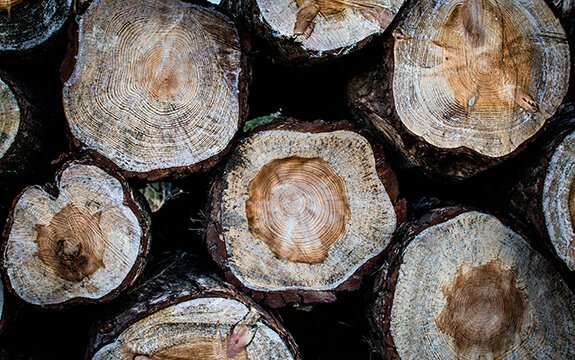Global database for water-use efficiency

By examining the carbon isotope composition of tree-rings, researchers from Swinburne and the University of California, Davis have compiled the first comprehensive global database for water-use efficiency.
Water-use efficiency is a key measure of how much water trees are sending back to the atmosphere. It increases along with the atmospheric concentration of carbon dioxide via tree responses to that carbon dioxide.
Water-use efficiency is thus used by modelers to adjust their rainfall and runoff forecasts for the role of the trees, especially in large river basins like the Amazon.
"Tree-ring data are vital to understanding past climates as well as predicting future climates across the globe," says lead researcher, Swinburne Bioscience and Innovation Professor Mark Adams.
"Over the past 100 years, the data shows that the rate at which water-use efficiency increased was greatest during the Great Depression and in the aftermath of World War II—periods of much slower increases in the concentrations of carbon dioxide in the atmosphere.
"In the last ten years, however, the rate of increase in water-use efficiency has shrunk to close to zero—the mature trees are no longer acclimating to atmospheric carbon dioxide the way they were 60+ years ago.
"This has important implications for global hydrological models that help us understand, predict and manage water resources."
Continuing rapid increases in atmospheric carbon dioxide are unlikely to elicit the same response from trees they did 50 years ago. Reductions in humidity and increases in run-off are now less likely than they once were.
Professor Adams says the data may also have climate implications for the current COVID-19 situation.
"If there is a pause in carbon dioxide emissions as a result of reduced economic activity generally, then we may see a rebound in the rate of change in water-use efficiency."
The research paper, "Diminishing Co-2-driven gains in water-use efficiency of global forests," has been published in Nature Climate Change.
More information: Mark A. Adams et al. Diminishing CO2-driven gains in water-use efficiency of global forests, Nature Climate Change (2020). DOI: 10.1038/s41558-020-0747-7
Journal information: Nature Climate Change
Provided by Swinburne University of Technology




















